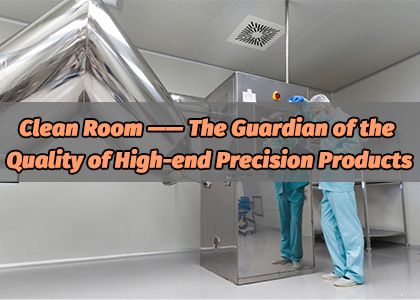
A clean room is a room where the concentration of airborne particles is controlled. Its construction and use are designed to reduce the introduction, generation and retention of particles in the room, while controlling other relevant parameters such as temperature, humidity and pressure as needed to achieve the cleanroom class specified for specific needs. Clean rooms are widely used in the fields of electronics, semiconductors, pharmaceuticals, biomedicine, optics and aerospace. With the transformation and upgrading of China's manufacturing industry, the rapid development of sophisticated technology such as computer science, biology and biochemistry, product processing requires precision, miniaturization, high quality and reliability, and puts forward higher requirements for the production environment, and the clean room engineering industry has developed rapidly in China.
According to the main controlled objects and application fields, clean rooms can be divided into industrial clean rooms and biological clean rooms. Among them, the industrial clean room takes inanimate particles as the main control object, which is mainly used in semiconductor and pan-semiconductor, new display, aerospace and other high-end manufacturing fields. The cleanliness level is higher, and the control standard of inanimate particles is strict. Biological clean room with inanimate suspended particles and microorganisms and other life particles as the main control object, mainly used in life science, food and drug health, hospital operating room and other fields. For microorganisms and other life particles control standards are more stringent. Biological clean room is subdivided into general biological clean room and biosafety clean room. General biological clean rooms are used in the production of most drugs and biological products, some foods, health products and medical facilities.
At present, China's clean room industry is in a period of rapid development. China's clean room industry started in the 1960s to meet the production needs of most domestic products. After the domestic reform and opening up, with the introduction of foreign enterprises and the development of high-end manufacturing industry, clean room technology has been significantly improved, followed by the promulgation of the "clean workshop design Code" in 1984 and the promulgation of the "clean room construction and acceptance Code" in 1990, marking the development of clean and clean technology in China has entered a new stage. At present, the industry is widely used in electronic information, medicine, food and other fields, and the market size continues to grow. The production process of various industries in China has put forward higher requirements for the indoor environment, and clean rooms have therefore played an important role in production.
Downstream application industries have different needs for clean room grades. Clean room class requirements vary according to the specific needs of different industries. Precision manufacturing industries such as semiconductors and pan-semiconductors have the highest level of application requirements for clean rooms; The electronics industry has different cleanliness needs according to the product type; The pharmaceutical industry, especially the production of sterile drugs, has strict requirements and follows GMP standards; The food industry is focused on food safety and needs to maintain basic clean room standards. In summary, the determination of clean room grades must be based on industry characteristics and production needs to ensure the quality and safety of the final product.
At present, clean rooms have been widely used in all walks of life, and have a complete industrial chain. The upstream segment of clean room engineering industry includes three main parts - building materials, air conditioning equipment, and mechanical and electrical equipment. Building materials include aluminum, color steel plate, epoxy floor paint, etc. Air conditioning equipment includes air filter air conditioning mechanical system, mechanical and electrical equipment includes air filter air conditioning mechanical system, etc. Most of the supply products are expected to maintain a full competitive situation for a long time to ensure the stability of the middle stream cost. The midstream link, mainly for clean room engineering design and construction, subdivided into engineering design, civil construction, clean room construction, gross profit margin of about 40%-50%, 10%-20%, 10% below, the engineering design link threshold is the highest, so the operating profit is higher.